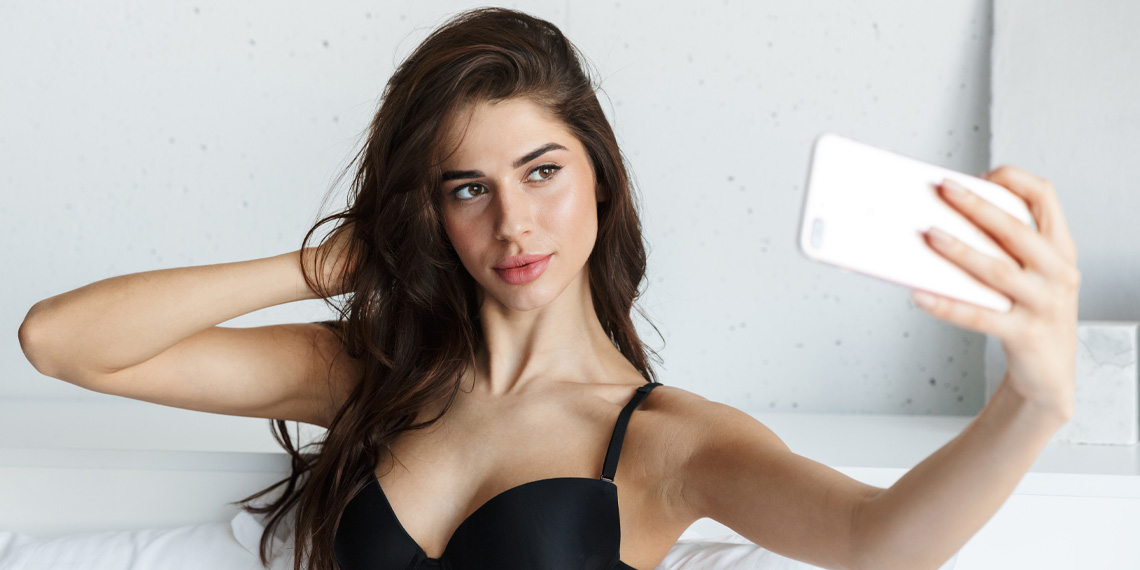
An analysis of selfies shared publicly on Twitter and Instagram found that women living in environments with higher equal inequality and where people are preoccupied with their relative social standing are more likely to publish sexy self-photos. These areas also had higher sales of goods and services related to female physical appearance enhancement. The research was published in The Proceedings of the National Academy of Sciences (PNAS).
Cultural sexualization of women refers to the process in which women’s bodies and identities are treated primarily as objects of sexual desire through cultural practices, media representations, and everyday interactions. In this phenomenon, women are portrayed in ways that emphasize their sexual attributes over their capabilities, intelligence, or character. Such representations can perpetuate widespread stereotypes that predominantly value women for their physical appearance and sexual availability.
The sexualization of women not only affects how they are perceived by others but also impacts their self-perception and self-esteem. It can create pressure to conform to unrealistic and narrow beauty and sexuality standards that dictate how women should look, behave, and interact.
There is substantial evidence that Western culture is becoming increasingly sexualized. However, views on the reasons for this trend vary. Some scholars argue that this is an indicator of the oppression of women, aligning with traditional sexist views and supporting the subordination of women. Others suggest that the rise in sexualization occurs in the context of increasing gender equality and is less prevalent among groups that accept traditional worldviews. These observations challenge the notion that sexualization necessarily indicates women’s oppression.
Study author Khandis R. Blake and her colleagues proposed that income inequality, rather than gender inequality, might be a contributing factor to the cultural sexualization of women. They noted that income inequality has been rising steadily over the past 40 years, a period that coincides with the increase in cultural sexualization. They conducted a study to determine whether gender inequality or income inequality better explains the phenomenon of cultural sexualization.
The researchers collected all sexy selfies (sexualized self-portrait photographs) available on Twitter and Instagram over a one-month period on a global scale. This resulted in nearly half a million posts, of which 68,562 could be geolocated to either a U.S. city, county, or one of 113 nations worldwide. The researchers then gathered data on gender and income inequality for these regions and analyzed the relationship between these factors and the number of sexy selfies from each region.
Contrary to the theory that sexy selfies indicate gender inequality, the results primarily showed no significant correlation between gender inequality and the number of sexy selfies in U.S. cities and counties. However, a clear association was found between income inequality and the number of sexy selfies in an area, persisting even after controlling for various potential confounding factors.
Reviewing different counties, the results again showed no link with gender inequality, but a significant correlation with income inequality was evident.
To further support these findings, the researchers investigated whether expenditures on women’s clothing and beauty salon services were more strongly linked to income inequality or gender inequality. They hypothesized that spending on female appearance enhancement is a clear indicator of the cultural emphasis on female physical and sexual attractiveness. The results indicated that such expenditures were also associated more with income inequality than with gender inequality.
“We find that female sexualization and physical appearance enhancement are positively associated with income inequality and generally are unassociated with gender inequality. The relationship between income inequality and female sexualization is particularly strong and robust in more developed countries and across US cities and counties. Our findings raise the possibility that sexualization and appearance enhancement are markers of female competition, occurring in environments in which incomes are unequal and status competition is highly salient,” the study authors concluded.
The study sheds light on the social origins of cultural sexualization of women. However, it should be noted that the results were based on data from specific social media websites. They might not be fully representative of the general population. Additionally, although most of the sexy selfies were posted by women, some of them came from men sharing sexy selfies originally posted by women.
The paper, “Income inequality not gender inequality positively covaries with female sexualization on social media,” was authored by Khandis R. Blake, Brock Bastian, Thomas F. Densond, Pauline Grosjean, and Robert C. Brooks.
from "sexy" - Google News https://ift.tt/W3m0Uls
via IFTTT
No comments:
Post a Comment